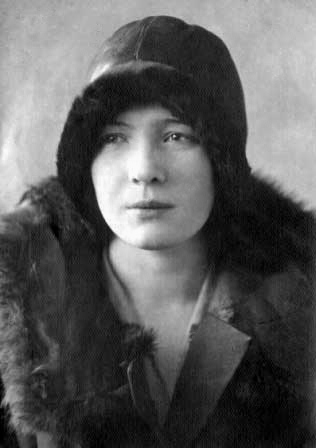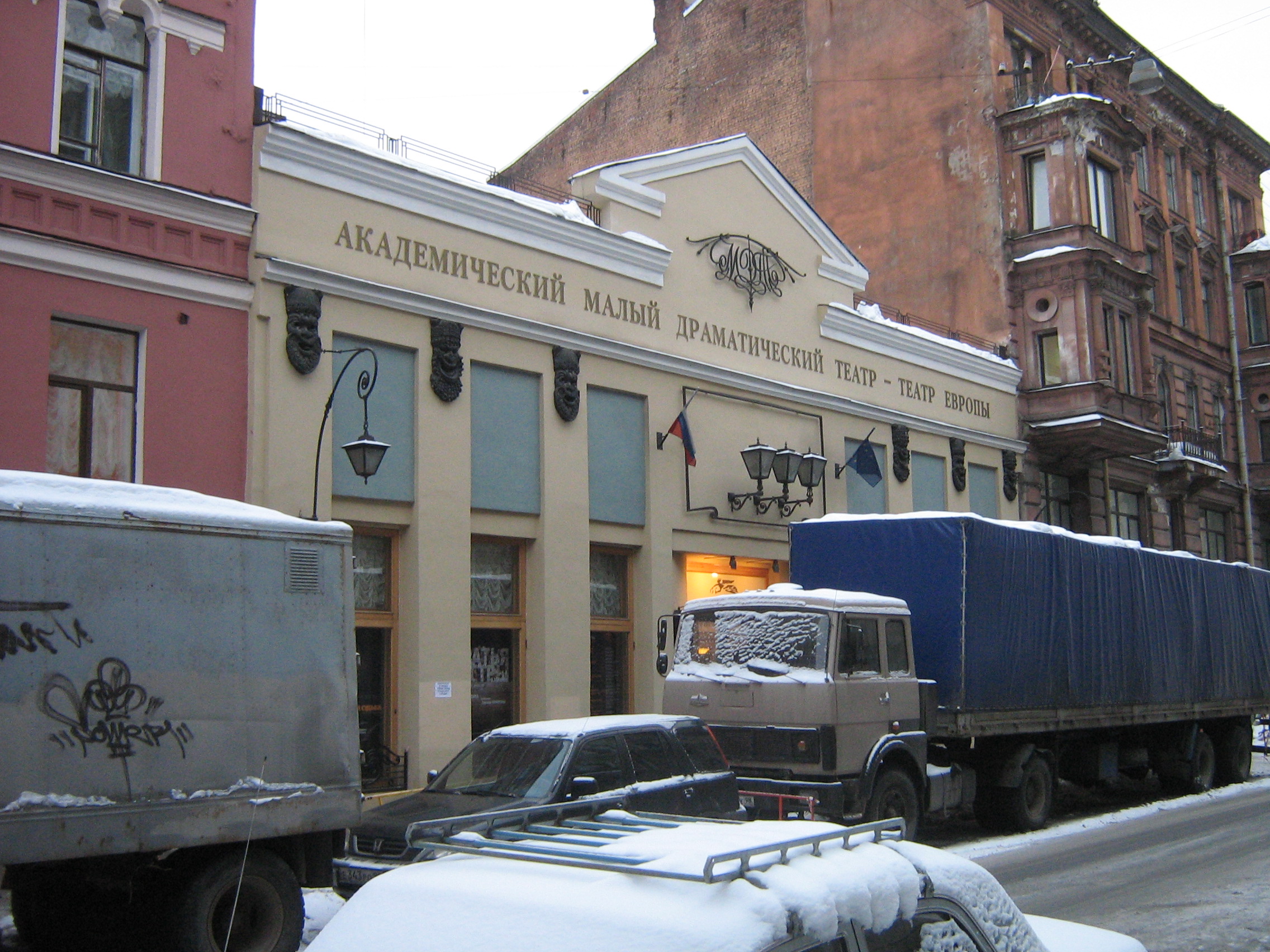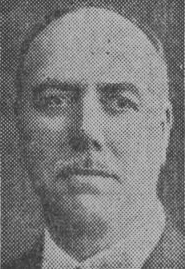|
Rubinstein Street (Saint Petersburg)
The Rubinstein Street is a street in Saint Petersburg, Russia. It runs from Nevsky Prospect to Zagorodny prospect. Since the 2000s it became famous as the main restaurant and bar street in the city, a centre of Petersburg social life. History The street's history goes back to the 1740s. At that time it was called Golovkin lane after Chancellor Gavriil Golovkin, whose country residence was located nearby. The modern name was given in 1929 in honour of composer Anton Rubinstein, who resided in the house No. 38. Landmarks * Five Corners — a crossroad, formed by the intersection of Rubinsteina Street with Zagorodny Prospekt (Zagorodny Avenue), Razyezzhaya Street, and Lomonosova Street (formerly Chernyshev Lane). * No. 7 — the so-called "Tear of Socialism". The avant-garde house was built in 1929—1931 as a commune, following the idea of collective household. Soviet poet Olga Bergholz was its most famous resident. * No. 13 — the Leningrad Rock Club, opened in 1981. * No. 15-1 ... [...More Info...] [...Related Items...] OR: [Wikipedia] [Google] [Baidu] |
Vladimirskaya (Saint Petersburg Metro)
Vladimirskaya (russian: Влади́мирская) is a station of the Saint Petersburg Metro The Saint Petersburg Metro (russian: links=no, Петербургский метрополитен, Peterburgskiy metropoliten) is a rapid transit system in Saint Petersburg, Russia. Construction began in early 1941, but was put on hold due to Wor ... opened on 15 November 1955. Saint Petersburg Metro stations Railway stations in Russia opened in 1955 Railway stations located underground in Russia Cultural heritage monuments of regional significance in Saint Petersburg {{Russia-railstation-stub ... [...More Info...] [...Related Items...] OR: [Wikipedia] [Google] [Baidu] |
Olga Bergholz
Olga Fyodorovna Bergholz ( rus, Ольга Фёдоровна Берггольц, p=ˈolʲɡə ˈfʲɵdərəvnə bʲɪrˈɡolʲts, a=Ol'ga Fyodorovna Byerghol'cz.ru.vorb.oga; – November 13, 1975) was a Soviet Union, Soviet and Russian Soviet Federative Socialist Republic, Russian poet, writer, playwright and journalist. She is most famous for her work on the Saint Petersburg, Leningrad radio during the city's Siege of Leningrad, blockade, when she became the symbol of city's strength and determination. Early life Olga Bergholz was born in a working suburb of Saint Petersburg. Her father Fyodor Khristophorovich Bergholz (1885—1948) was a surgeon of half-Russians, Russian and half-Latvians, Latvian descent, although in 1942 he was forcefully sent to the Krasnoyarsk Krai as "an ethnic Germans, German and a son of a principal shareholder" (his father was in fact a factory worker).''Olga Berggolts (2011)''. Olga. Forbidden Diary. — Moscow: Azbuka Attikus, 444 pages (diaries 193 ... [...More Info...] [...Related Items...] OR: [Wikipedia] [Google] [Baidu] |
Sergei Dovlatov
Sergei Donatovich Dovlatov (russian: link=no, Сергей Донатович Довлатов; 1941 1990) was a Soviet journalist and writer. Internationally, he is one of the most popular Russian writers of the late 20th century. Biography Dovlatov was born on 3 September 1941 in Ufa, the capital of Bashkir ASSR in the Soviet Union, where his family had been evacuated in the beginning of World War II from Leningrad (now Saint Petersburg) and lived with a collaborator of The People's Commissariat of Internal Affairs (NKVD) for three years. His mother, Nora Dovlatova, was Armenian and worked as a proofreader, and his father, , was Jewish and a theater director. After 1944, he lived with his mother in Leningrad. Dovlatov studied at the Finnish Department of Leningrad State University, but flunked after two and a half years. There, he became acquainted with the Leningrad poets Yevgeny Rein, Anatoly Naiman, Joseph Brodsky, the writer Sergey Wolf, and the artist Alexander Ne ... [...More Info...] [...Related Items...] OR: [Wikipedia] [Google] [Baidu] |
Ivan Yefremov
Ivan Antonovich (real patronymic Antipovich) Yefremov ( ru , Ива́н Анто́нович (Анти́пович) Ефре́мов; April 23, 1908 – October 5, 1972; last name sometimes transliterated as Efremov) was a Soviet paleontologist, science-fiction author and social thinker. He founded taphonomy, the study of fossilization patterns. Biography He was born in the village of Vyritsa in Saint Petersburg Governorate on April 23, 1908. His parents divorced during the Russian Revolution. His mother married a Red Army commander and left the children in Kherson to be cared for by an aunt who soon died of typhus. Yefremov survived on his own for some time, after which he joined a Red Army unit as a "son of the regiment" and went to Perekop with it. In 1921, he was discharged and went to Petrograd (today's Saint Petersburg) to study. He completed his education there while combining his studies with a variety of odd jobs. He later commented that "the Revolution was als ... [...More Info...] [...Related Items...] OR: [Wikipedia] [Google] [Baidu] |
Maly Drama Theatre
Maly Drama Theatre (russian: Академический Малый драматический театр — Театр Европы) is a theatre located on 191002, St. Petersburg, Rubinstein street, house, 18. The artistic director and head of the theatre is Lev Dodin. History The Leningrad Regional Drama Theatre of Small Forms was created in Leningrad in 1944 by the decision of the Executive Committee of the Leningrad Regional Council of Working People's Deputies of September 9, 1944 No. 83. At first it was a traveling theatre and did not have its own building, and the theatre troupe gave performances in the towns and villages of the Leningrad region. Only in 1956 the theatre was allocated a building in Leningrad on Rubenstein street, house 18. From 1944 to 1969, the director of the theatre was Evgeny Mikhailovich Kornblit. From 1961 to 1966, the main director of the theatre was Yakov Semenovich Khamarmer. From 1967 to 1970, the main director of the theatre was Vadim Sergee ... [...More Info...] [...Related Items...] OR: [Wikipedia] [Google] [Baidu] |
Fyodor Lidval
Fyodor Ivanovich Lidval (russian: Фёдор Иванович Лидваль, Swedish:Johan Fredrik Lidvall) (June 1 (June 13) 1870, St. Petersburg – 1945, Stockholm) was a Russian-Swedish architect. Life Lidvall was born in St. Petersburg into a family of Swedes. In 1882 he attended elementary school at the Swedish Church of St. Catherine, and then the second Petersburg Technical High School in 1888. For two years he worked in Baron Stieglitz's School of Technical Drawing. From 1890 to 1896 Lidvall was a student in the architectural department of the St. Petersburg Academy of Arts, studying (1894–1896) in the workshop of the eminent architect Leon Benois. He graduated from the Academy of Fine Arts in 1896 with the title "Artist-Architect". From 1909 he was a member of the Academy of Architecture, an arm of the Imperial Academy of Arts. In 1917, ruined by the revolution, he was forced to emigrate to his family in Stockholm, ending the most fruitful period of his work which i ... [...More Info...] [...Related Items...] OR: [Wikipedia] [Google] [Baidu] |
Tolstoy House
The Tolstoy House is a well-known apartment building in St. Petersburg, located at 15-17 Rubinstein Street and 54 Fontanka Embankment. The building was constructed in 1910–1912 under the aegis of Major-General Count , nephew of the 1812 war hero P. A. Tolstoy. The architect Fyodor Lidval designed it in Nordic Art Nouveau. The construction is interesting for its inner street with three connected yards where the facades were decorated as richly as the front ones. Three-storey arches leading to the inner street are the architectural dominants of the compositions. After Tolstoy's death in 1913, ownership passed to his widow Countess Olga Tolstoy (born a princess of the Vasilchikov family, daughter of Prince Alexander Illarionovich Vasilchikov, a second in the famous 1841 duel between Mikhail Lermontov and Nikolai Martynov). For a century of its history, the building hosted numerous famous residents. In 2008, the house was made a protected art and cultural monument of regional ... [...More Info...] [...Related Items...] OR: [Wikipedia] [Google] [Baidu] |
Leningrad Rock Club
The Leningrad Rock Club (russian: Ленинградский рок-клуб) was a historic music venue of the 1980s in Leningrad, situated on Rubinstein Street in the city centre. Opened in 1981 and overseen by the KGB, it became the first legal rock music venue in Leningrad. Overall, it was the largest rock scene in the Soviet Union and influenced the development of Russian rock. History Leningrad was a centre of rock music in the Soviet Union, perhaps due to its geographical proximity with Finland, which made it easier to access Western music. Attempts to create rock clubs began as early as 1973, but they were largely unsuccessful. The Leningrad Rock Club formed in 1981 under Leonid Brezhnev. Membership card number one was issued to Beatles fan Kolya Vasin. It was intended to be organized similarly to the Union of Soviet Composers and censored lyrics and issued permits to perform in an effort to prevent the bands from making much that was too controversial. However, by pro ... [...More Info...] [...Related Items...] OR: [Wikipedia] [Google] [Baidu] |
Avant-garde
The avant-garde (; In 'advance guard' or ' vanguard', literally 'fore-guard') is a person or work that is experimental, radical, or unorthodox with respect to art, culture, or society.John Picchione, The New Avant-garde in Italy: Theoretical Debate and Poetic Practices' (Toronto: University of Toronto Press, 2004), p. 64 . It is frequently characterized by aesthetic innovation and initial unacceptability.Kostelanetz, Richard, ''A Dictionary of the Avant-Gardes'', Routledge, May 13, 2013 The avant-garde pushes the boundaries of what is accepted as the norm or the '' [...More Info...] [...Related Items...] OR: [Wikipedia] [Google] [Baidu] |
Dostoyevskaya (Saint Petersburg Metro)
Dostoyevskaya (russian: Достоéвская) is a station on the Line 4 of the Saint Petersburg Metro, opened on December 30, 1991. Walkways connect Dostoyevskaya with Vladimirskaya metro station of the Kirovsko-Vyborgskaya Line Line 1 of the Saint Petersburg Metro, also known as ''Kirovsko-Vyborgskaya Line'' (russian: Ки́ровско-Вы́боргская ли́ния) or ''Red Line'', is the oldest rapid transit line in Saint Petersburg, Russia, opened in 1955, wh .... Saint Petersburg Metro stations Railway stations in Russia opened in 1991 Railway stations located underground in Russia {{Russia-railstation-stub ... [...More Info...] [...Related Items...] OR: [Wikipedia] [Google] [Baidu] |
Anton Rubinstein
Anton Grigoryevich Rubinstein ( rus, Антон Григорьевич Рубинштейн, r=Anton Grigor'evič Rubinštejn; ) was a Russian pianist, composer and conductor who became a pivotal figure in Russian culture when he founded the Saint Petersburg Conservatory. He was the elder brother of Nikolai Rubinstein, who founded the Moscow Conservatory. As a pianist, Rubinstein ranks among the great 19th-century keyboard virtuosos. He became most famous for his series of historical recitals—seven enormous, consecutive concerts covering the history of piano music. Rubinstein played this series throughout Russia and Eastern Europe and in the United States when he toured there. Although best remembered as a pianist and educator (most notably in the latter as the composition teacher of Tchaikovsky), Rubinstein was also a prolific composer throughout much of his life. He wrote 20 operas, the best known of which is '' The Demon''. He composed many other works, including five pian ... [...More Info...] [...Related Items...] OR: [Wikipedia] [Google] [Baidu] |
Gavriil Golovkin
Count Gavrila (Gavriil) Ivanovich Golovkin (russian: Гаври́ла (Гаврии́л) Ива́нович Голо́вкин) (1660 – 20 January 1734) was a Russian politician, statesman who formally presided over foreign affairs of the Russian Empire from 1706 until his death. The real control over Russian diplomacy during his lengthy term in office was exercised by Boris Kurakin until 1727 and by Andrey Osterman after his death. In 1677, while still a young man, Gavrila Golovkin was attached to the court of the tsarevich Peter I of Russia, Peter, with whose mother Nataliya Kyrillovna Naryshkina, Nataliya he was connected, and vigilantly guarded him during the disquieting period of the regency of Sophia Alekseyevna, Sophia. He accompanied the young tsar abroad on his first foreign tour, and worked by his side in the dockyards of Zaandam. In 1706, he succeeded Fyodor Alexeyevich Golovin, Golovin in the direction of foreign policy, and was created the first Russian grand-chancell ... [...More Info...] [...Related Items...] OR: [Wikipedia] [Google] [Baidu] |






